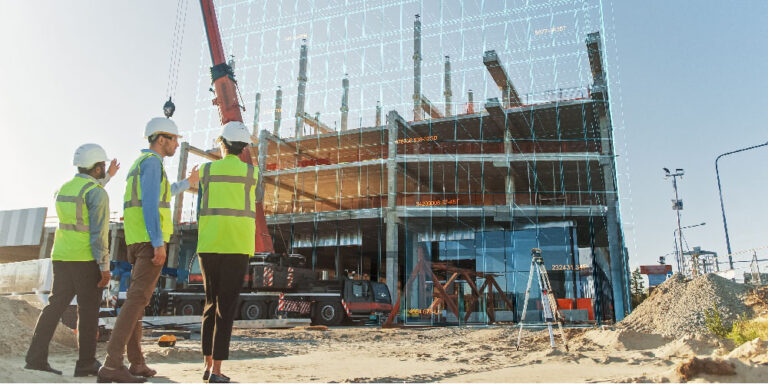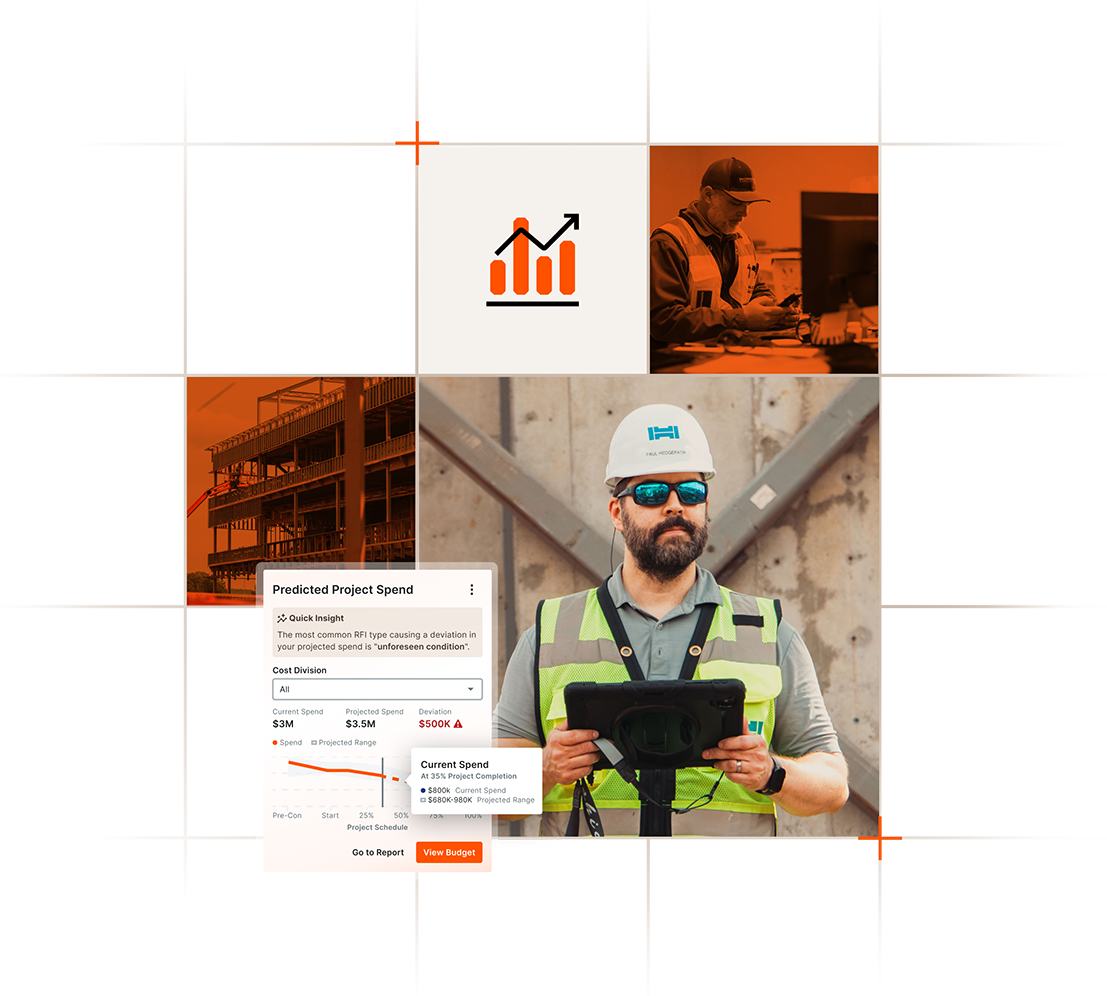— 9 min read
Architectural Concept Development: The Collaborative Art & Science of Building Design


Last Updated Oct 3, 2025

Daniel Kavanagh
Solution Specialist, Industry Compliance
15 articles
Daniel Kavanagh is a Senior Strategic Product Consultant at Procore, based in Dublin, Ireland. Daniel is a results-oriented project manager with a passion for building relationships and exceeding client and management expectations, with career experience in project management, systems implementation, technical design and architectural finishes. Daniel has been a member of the construction industry since 2014, and graduated from the Carlow Institute of technology.

Kacie Goff
Contributing Writer
91 articles
Kacie Goff is a construction writer who grew up in a construction family — her dad owned a concrete company. Over the last decade, she’s blended that experience with her writing expertise to create content for the Construction Progress Coalition, Newsweek, CNET, and others. She founded and runs her own agency, Jot Content, from her home in Ventura, California.
Last Updated Oct 3, 2025

For a building to transform from an idea into an actual structure, a lot needs to happen in preconstruction. Architectural concept development is just the beginning — and a key piece of this process. During this phase, stakeholders come together to conceive and refine ideas for the building while marrying those ideas with the reality of the project (e.g., site conditions and budget).
In this article, we delve into the architectural concept development process, outlining seven steps needed to transform an idea into a deliverable design while sharing best practices to streamline the journey.
Table of contents
7 Stages of Developing an Architectural Concept
Architectural concept development encompasses phases in the architecture design process, which is just one part of a construction project’s predevelopment phase. Looking at how to develop design concepts in architecture — and what usually happens during this early ideation stage — highlights how important these early steps are in setting a project up for success.
By blending art and science — and relying on collaboration between stakeholders — architectural concept development lays the foundation before a physical foundation gets poured. Here are six stages of architectural design development:
1. Understanding the Client’s Vision
To arrive at an architecture design concept, the architecture team needs to understand what the owner both requires and wants from the project. That’s true whether it’s a commercial project, a residential one, or any other kind of build.
All project owners come in with a pre-existing idea of what they want to accomplish. Some have a specific aesthetic in mind, while others know what purposes the structure needs to fulfill. It’s the architect’s job to draw that vision out from the client and then refine it.
In most cases, the owner doesn’t have a background in design or construction. What they share to start may be as simple as, “We want to make the office look cool.” However, probing questions and open lines of communication can help the architectural concept development team draw out the detail they need, from budgetary restraints to style preferences. The project can’t move forward into its other phases until this happens.
The head architect on the project usually serves as the project manager for this part of the process. It’s their responsibility to be unbiased in these early exploratory stages, truly digging in with the project owner to best understand their expectations and desires.
At the same time, though, the architect needs to keep the project moving forward. They should ask clarifying questions that will help their team capture the owner’s requirements and preferences in the architecture design concept.
2. Site Analysis
Next up, the architecture team needs to analyze the site to marry the owner’s vision with what’s possible on the ground. They look at the physical characteristics of the chosen parcel, plus other factors from the amount of sun the area gets to nearby transportation.
During this phase, the architecture team also looks at potential restraints put in place by local building codes and regulations.
3. Research and Inspiration
Once the design team feels comfortable they can progress, they move on to ideation supported by elements that inspire the architecture design concept. They might look at other buildings that the owner has said they like, or any branding tied to the owner (e.g., company logo and colors if they’re designing an office). The historical and social context of the area might also help to spark ideas.
A successful team knows how to develop design concepts in architecture that flow with the surrounding area while rising to the owner’s expectations. When it comes to architectural concept development, the architects function as artists. At concept height, they’re pulling in inspiration to create art, not pinning down detail.
NOV 6, 2025 at 11:00 AM PST / 2:00 PM EST
Free Webinar: Prove your project management software is profitable
Join Procore and Dodge Data & Analytics for a 2025 Dodge ROI Report deep dive.

4. Concept Development
Next is the development of the actual architectural design concept. Most architects start to distill their ideas into the concept through hand drawings (those might happen on paper or via a tablet with a stylus). This phase also establishes the design language, like the colors and textures that will be used on the project, along with rough spatial layouts.
Here, teams need to know how to develop design concepts in architectural drawings that convey the right information. When designing a hotel, for example, the owner may expect several different drawings, including one that shows the layouts of rooms on different floors and an elevation drawing showing what guests will see upon arrival.
The project and the owner’s wants and needs shape what the architecture team develops in this stage.
5. Concept Evaluation and Selection
Once the architecture design concept has been outlined, stakeholders evaluate it before selecting what to present to the owner. This generally means feasibility studies, and it might include conversations with the owner. At this phase, the architect might ask them if they want to spend extra money to get certain design features, for example.
This step also evaluates constructibility. How that functions depends on the project delivery method. In a traditional method like design-bid-build (DBB), the architecture team might tap outside resources to determine what’s realistic in terms of technical feasibility. On a design-build (DB) project — where the architectural concept development and the construction are handled by the same firm — the architecture team might collaborate with their firm’s internal structural, mechanical and material specialists to assess constructibility.
Learn more about the difference between DBB and DB.
6. Architectural Design Concept Presentation
Once all of the above steps are complete, the design team prepares to show the architectural design concept to the owner.
Historically, that meant pairing 2D drawings with tools to help the owner visualize the project, like mood boards, material samples, or even a physical 3D model. In the digital age, though, preparing the concept for presentation usually leverages technology. That might mean creating a digital 3D model or even developing a virtual reality scenario so the owner can put on a headset and “walk around” the concept.
The presentation of the design is the core of this step, but it’s not how it ends. On the vast majority of projects, the owner shares feedback on the presented concept, and the design team goes back to further refine the concept. This process often repeats several times before the owner is satisfied with the concept and the project moves forward.
7. Deliverables From Architectural Concept Development
Architectural concept development is an involved engagement between the design team and the project owner. This process of capturing ideas from the owner’s head and turning them into an architectural design concept can take a year or more. By the end of it, the architecture team should be able to produce something that other stakeholders can use to create the plan drawings and specifications needed to actually build the project.
To get to the point where detailed drawings and specs can be produced, the architect needs to be both an artist and a detective. They need to ask questions to encourage the owner to think about what they want from the project, probing them to draw out the requisite level of detail. Then, they need to use everything they have learned — along with their own creativity and expertise — to create art that is an architectural design concept.
Best Practices
Here are a few best practices for turning an idea into a deliverable design.
Balancing Artistic Vision and Practical Constraints
Concept development demands a significant amount of creativity, yet it is also about balancing artistic vision with practical constraints. Often, clients come in with grand, inspiring ideas, which must be aligned with the realities of budgetary and site constraints.
Introducing a sense of realism early in the process ensures that these dreams are grounded in feasibility. This requires a detailed examination of what is technically and financially possible, making sure that the envisioned designs can be practically achieved without compromising the project's integrity.
Role of Regulations and Safety
Regulation and safety play a crucial role in the architectural concept development process. Federal, state, and local building codes and regulations dictate the standards for structural integrity, fire safety, accessibility, and energy efficiency.
Adherence to regulations like the ADA and NCARB ensure that buildings are safe for occupants and environmentally sustainable. During the concept development phase, architects must thoroughly understand and integrate these regulatory requirements into their designs.
Technology Integration
BIM has become an invaluable tool in modern architecture. It enhances visualization, clash detection, and overall collaboration efficiency. By creating a digital model of the project before construction begins, potential issues can be identified and resolved early on, saving time and resources. This proactive approach minimizes risks and ensures all stakeholders are on the same page.
- Virtual Reality (VR) and Augmented Reality (AR)
Technologies such as VR and AR have revolutionized client presentations. These tools offer an immersive experience, allowing stakeholders to "walk" through the proposed design. This not only aids in making more informed decisions but also helps clients visualize the end product more clearly, leading to more accurate feedback and fewer revisions.
Managing Indecisiveness and Collaboration
Client indecisiveness can pose a significant challenge in the concept development phase. Encouraging clients to make informed decisions without feeling pressured is crucial, given the considerable amount of time they will spend in the completed building.
A strong, unbiased project manager is essential for navigating these waters. Facilitating decision-making and maintaining project momentum often requires regular face-to-face meetings. This direct interaction expedites resolution of issues and ensures that all parties remain aligned, far more effectively than digital communications alone.
Early Stakeholder Engagement
Engaging stakeholders such as main contractors and specialty contractors early in the process can significantly mitigate risks and streamline the workflow. Early involvement ensures that practical and technical insights are incorporated from the outset, reducing the likelihood of costly revisions. However, this approach can complicate competitive bidding, as early involvement might give some firms a perceived advantage. Balancing early engagement with maintaining competitive fairness is key.
Concept Development: Making Building Happen
The architectural concept development phase is more than just a series of steps; it is a mix of communication, creativity, and practicality. Good communication is key in this process. From the initial ideas to the final concept presentation, ongoing talks between architects, clients, contractors, and consultants are crucial.
This exchange of ideas helps set the right expectations, address issues, and make informed decisions. Regular face-to-face meetings and timely feedback can prevent misunderstandings and keep the project moving forward.
The success of architectural concept development all depends on creating and upholding a collaborative environment with good communication. Teamwork between all parties not only brings the client's vision to life but also ensures the final design is both creative and practical.
Was this article helpful?
Thank you for your submission.
100%
0%
You voted that this article was . Was this a mistake? If so, change your vote
Scroll less, learn more about construction.
Subscribe to The Blueprint, Procore’s construction newsletter, to get content from industry experts delivered straight to your inbox.
By clicking this button, you agree to our Privacy Notice and Terms of Service.
Thank you!
You’re signed up to receive The Blueprint newsletter from Procore. You can unsubscribe at any time.
Categories:
Written by

Daniel Kavanagh
Solution Specialist, Industry Compliance | Procore Technologies
15 articles
Daniel Kavanagh is a Senior Strategic Product Consultant at Procore, based in Dublin, Ireland. Daniel is a results-oriented project manager with a passion for building relationships and exceeding client and management expectations, with career experience in project management, systems implementation, technical design and architectural finishes. Daniel has been a member of the construction industry since 2014, and graduated from the Carlow Institute of technology.
View profile
Kacie Goff
Contributing Writer | Procore Technologies
91 articles
Kacie Goff is a construction writer who grew up in a construction family — her dad owned a concrete company. Over the last decade, she’s blended that experience with her writing expertise to create content for the Construction Progress Coalition, Newsweek, CNET, and others. She founded and runs her own agency, Jot Content, from her home in Ventura, California.
View profileExplore more helpful resources

Capital Project Management: A Quick Guide for Construction Pros
With aging infrastructure and new technology needs, capital projects will remain a high priority for communities around the world in the coming years. Effectively managing capital construction projects is necessary...

Avoiding The App Trap: Overcome Financial Silos to Connect Field & Office
For general contractors working on razor-thin margins, rework and project delays are more than simple inefficiencies — they are major threats to the bottom line. For years, GCs have attempted...

Profit from Predictability: Construction Software as a Business Strategy
For general contractors, managing complex, multi-million-dollar projects, every project phase — from planning and budgeting to on-site execution — is an opportunity to lose time and money. Construction software is...

Defending Against Financial & Legal Risks on Megaprojects
The construction industry has seen marked growth in megaprojects. Some experts classify any project over $500 million as a megaproject, while others argue that the build needs to be $1...
Free Tools
Calculators
Use our calculators to estimate the cost of construction materials for your next project.
Templates
Find a template to help you with your construction project tasks.
Material Price Tracker
Get the latest U.S. retail prices and view historical trends for common building materials.
Glossary
Explore key terms and phrases used in the industry.
